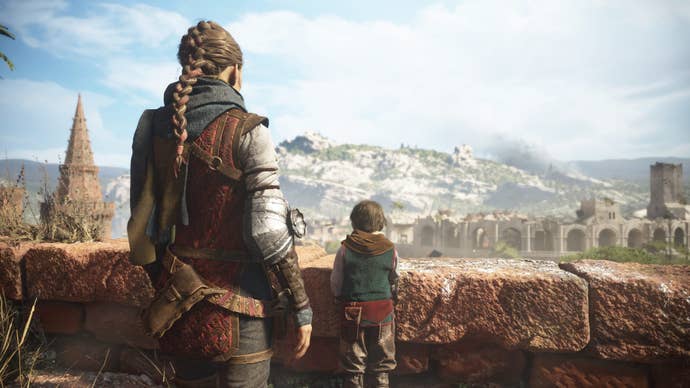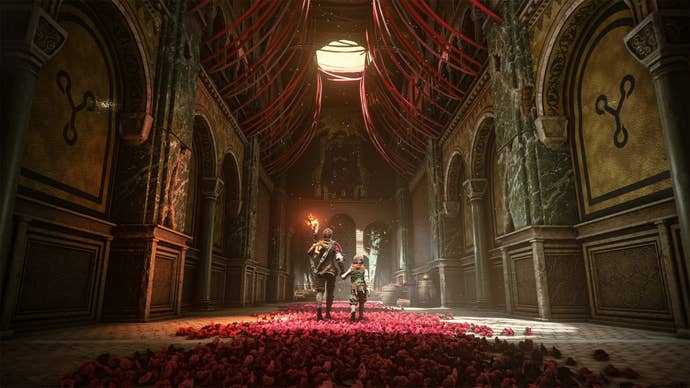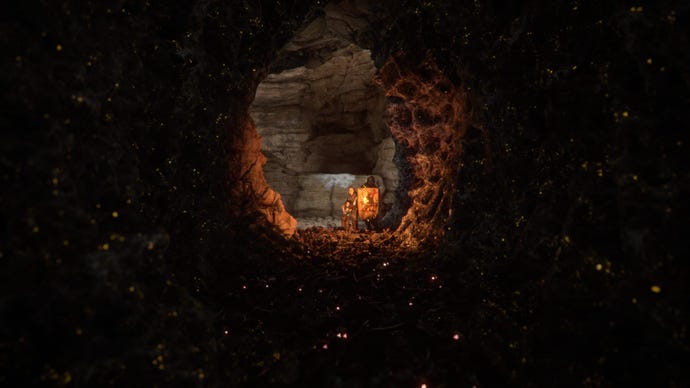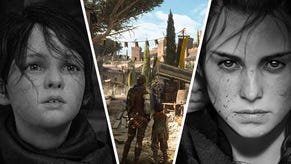A Plague Tale: Requiem review – an essential Game Pass encore, in sickness and in health
The cinematic sequel to A Plague Tale: Innocence wants you to think long and hard about who you are, and what you’ve done.
During the Dutch revolt from 1566 to 1648, there was a cruel general of the Geuzen named Diederik Sonoy that supposedly employed rats as a method of torture on captured troops. He’d take a starving rat, a pottery bowl, and embers of charcoal from a nearby fire and show them to the accused. The rat – intentionally starved and kept separate from other creatures – would be placed on the naked body of a prisoner. The bowl would be placed over the rat, and the charcoals added on top. The rat would gnaw into the very bowels of the victim, as it tried desperately to escape. More often than not, the rat and the prisoner would die. The rat’s destruction in an attempt at self-preservation was all for nothing.
That’s what A Plague Tale: Requiem feels like; your protagonist duo, Amicia and Hugo, are the rats. They rip an almost-unbelievable path of destruction through 14th Century France as they run, panicked, from the death and disease that they cannot shake. They wreak havoc on the fragile body of a country torn apart by war, pestilence, famine, and death. Cruelty and inhumanity pushes them forward as the world falls apart behind them, and in trying to be kind they do some of the most horrific damage you’re liable to see in a video game this year.
A Plague Tale: Requiem is not for the faint-hearted – and not just because of the 300,000 rats the developers can summon on-screen at once. The central story is a grim reflection of a human race that is, inherently, cruel. It’s a story about how even the brightest and most caring of us can be pushed to our limits and become unhinged; violent and disaffected and barbaric. It’s a game that is aware of what it makes you do – how it makes you kill, even if you don’t want to – and pulls on that guilt to make you, and your characters, suffer. In A Plague Tale: Requiem, you are the rat being forced through the body of a France that knows nothing but sorrow, and you will find you just can’t stop eating – no matter how much it hurts you.

This achingly hopeless story is brought to life by the exemplary acting skills of Charlotte McBurney – who plays player character, Amicia – with support from big-name actors like Kit Connor (who you may know from Netflix’s Heartstopper), and others. Developer Asobo Studio, who you will otherwise know from Microsoft Flight Sim, has done some next-level work with the animation and rigging, too; there are times the facial expressions are so good, you forget you’re playing a game and could be convinced this is some specialised CGI film, or something. One moment in particular – where Amicia recalls a violent outburst that will have dire consequences for days to come – really showed how astute Asobo is with its tech. Amicia’s eyes seem to glaze over as she dissociates, before they refocus and she zones back into the present.
Between an affecting script and cinematic, emphatic moments like this, you’re tempted to put Requiem on a level with even the Sony monoliths – God of War, The Last of Us, A Plague Tale: Requiem. It’s an unlikely trilogy, but in some ways this double-A gem’s punches land as heavily as its genre-defining peers. But all that focus on storytelling, historical detail, and visual fidelity means there are little blindspots elsewhere.
This is a bigger undertaking than its prequel, A Plague Tale: Innocence, and by quite some margin. Some chapters go more open than anything the series has done before (and to great effect; playing around with a windmill puzzle before sneaking up to a forbidden sanctuary – all of which you can see from some wide open, flower-packed fields is a remarkable feat), but in doing so the tightness of Innocence’s well-curated stealth puzzling falls apart, like a crumbling viaduct under the weight of some 300,000 rats.

Requiem makes you kill. And it kills you, too. But Asobo never does it with a sadistic eye – this isn’t Edios’ mean-spirited Tomb Raider. In death, you learn. Maybe it was a gnawing pack of rats that got you when you mistimed how long your fickle, burning torch would last. Or maybe it was a guard that saw you just a second too late and impaled you on his spear. But next time, you know how to approach this part of the world – maybe you’ll find some grass to hold your breath in as a patrol passes, or maybe you’ll use your meager resources to ignite a pile of rats to allow you safe passage.
The pure stealth – foisted on you often – is readable, engaging, and lives up to the fantasy of being a dejected teenage woman who will do anything to save her troubled brother. But as the world continues to hurt Amicia, she becomes determined to hurt it back; knives, crossbows, and lethal takedowns are all part of her repertoire now. For better and for worse. Narratively, killing endless hired goons by feeding them to rats or flinging rocks at their head actually works – this isn’t some Lara Croft (2013) ludo-narrative dissonance. Your allies grimly understand your rage, your perverse desire to kill, your enjoyment of it. You even imprint it on them, sometimes. The rat must feed, after all.
It just doesn’t always make sense in-game. Some parts of Requiem are more open world; there’s a goal at the end, and you need to get there. Will you use the rats to open a path? Will you kill everyone en route? Or will you sneak all the way? The choice is often yours, and often – like all good stealth games – your improvised strategy will burn up in a flurry of torchlight, raised voices, and blood. But in trying to force stealth mechanics, combat engagements, guest character abilities, ‘the floor is lava’ systems, and light/dark physics challenges into one engagement, the game sometimes feels like a goose, tied down and force-fed, with the results coming off more like offal than foie gras.

Cumbersome and overloaded choose-your-own-adventure sections aside, though, the game knows pace. Easily doable within 18 hours (at a brisk pace), Requiem never outstays its welcome, and deftly uses Uncharted-like downtime to introduce you to a gorgeous, richly-detailed world that perpetually feels on the brink of annihilation. The most human of stakes – the life of your dear brother – is continually weighed up against the lives of other humans, other living beings, of yourself… and the dread you look on with as Amicia pushes forward through it all, becoming more and more detached and unhinged, is as compelling as any piece of cinema you’d get at Cannes or Tribeca.
Rats are often embodied by their desperation; as creatures that’d wear their own claws away by scratching desperately to survive, or eat through the hot, wet meat of a living person in the blind hope they’ll see freedom once again. Requiem feels like a game that isn’t just built around rats, but based on them. It asks: ‘what would it be like if the rat under the bowl had a conscience’? And its comment on the nature of humanity – and how similar we may or may not be to chattering, mindless vermin – will stay with me for years to come. Asobo should be proud of what it achieved in this game, as depressing and engrossing as it is.

















